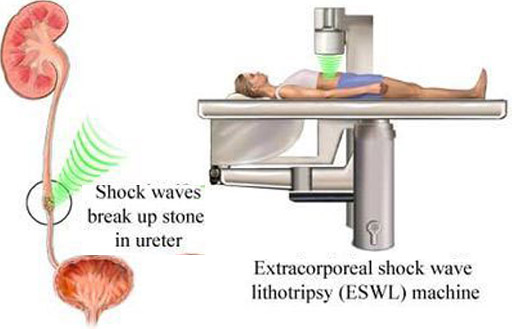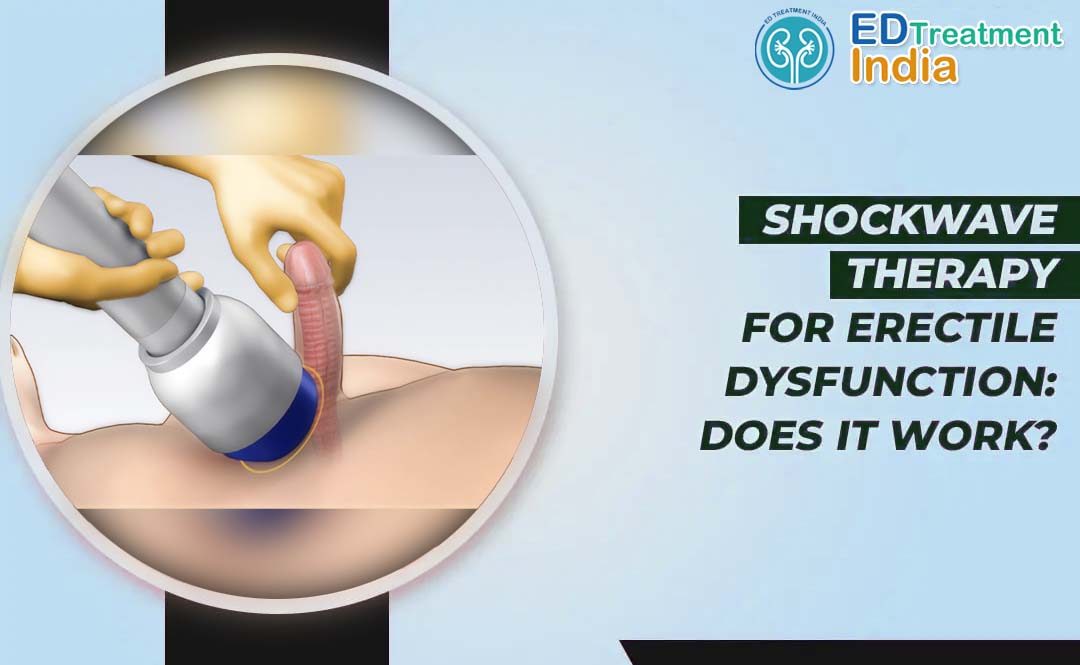Lithotripsy is the use of high-energy shock waves to fragment and disintegrate kidney stones. The shock wave, created by using a high-voltage spark or an electromagnetic impulse outside of the body, is focused on the stone. The shock wave shatters the stone, allowing the fragments to pass through the urinary system. Since the shock wave is generated outside the body, the procedure is termed extracorporeal shock wave lithotripsy (ESWL). The name is derived from the roots of two Greek words, litho , meaning stone, and trip , meaning to break.
ESWL is used when a kidney stone is too large to pass on its own, or when a stone becomes stuck in a ureter (a tube that carries urine from the kidney to the bladder) and will not pass. Kidney stones are extremely painful and can cause serious medical complications if not removed.
Ultrasonic lithotripsy uses high frequency sound waves delivered through an electronic probe inserted into the ureter to break up the kidney stone. The fragments are passed by the patient or removed surgically.
Electrohydraulic lithotripsy (EHL) uses a flexible probe to break up small stones with shock waves generated by electricity. The probe is positioned close to the stone through a flexible ureteroscope. Fragments can be passed by the patient or extracted. EHL requires general anesthesia and can be used to break stones anywhere in the urinary system.
Diagnosis/Preparation
ESWL should not be considered for persons with severe skeletal deformities, people weighing more than 300 lb (136 kg), individuals with abdominal aortic aneurysms, or persons with uncontrollable bleeding disorders. Women who are pregnant should not be treated with ESWL. Individuals with cardiac pacemakers should be evaluated by a cardiologist familiar with ESWL. The cardiologist should be present during the ESWL procedure in the event the pacemaker needs to be overridden.
Prior to the lithotripsy procedure, a complete physical examination is performed, followed by tests to determine the number, location, and size of the stone or stones. A test called an “intravenous pyelogram” (IVP) is used to locate the stones, which involves injecting a dye into a vein in the arm. This dye, which shows up on x ray, travels through the bloodstream and is excreted by the kidneys. The dye then flows down the ureters and into the bladder. The dye surrounds the stones. In this manner, x rays are used to evaluate the stones and the anatomy of the urinary system. Blood tests are performed to determine if any potential bleeding problems exist. For women of childbearing age, a pregnancy test is done to make sure they are not pregnant. Older persons have an EKG test to make sure that no potential heart problems exist. Some individuals may have a stent placed prior to the lithotripsy procedure. A stent is a plastic tube placed in the ureter that allows the passage of gravel and urine after the ESWL procedure is completed.
The process of lithotripsy generally takes about one hour. During that time, up to 8,000 individual shock waves are administered. Depending on a person’s pain tolerance, there may be some discomfort during the treatment. Analgesics may be administered to relieve this pain.
Aftercare
Most persons pass blood in their urine after the ESWL procedure. This is normal and should clear after several days to a week. Lots of fluids should be taken to encourage the flushing of any gravel remaining in the urinary system. Treated persons should follow up with a urologist in about two weeks to make sure that everything is progressing as planned. If a stent has been inserted, it is normally removed at this time.
Risks
Abdominal pain is fairly common after ESWL, but it is usually not a cause for worry. However, persistent or severe abdominal pain may imply an unexpected internal injury. Occasionally, stones may not be completely fragmented during the first ESWL treatment and further lithotripsy procedures may be required.
Some people are allergic to the dye material used during an IVP, so it cannot be used. For these people, focused sound waves, called “ultrasound”, can be used to identify where the stones are located.
Normal results
In most cases, stones are reduced to gravel and passed within a few days. Individuals may return to work whenever they feel able.
Get More Information on Shockwave Therapy in India at:
Website: http://www.edtreatmentindia.com/affordable-cost-shock-wave-therapy-treatment-in-india.html





It is perfect time to make some plans for the future and it’s time to be
happy. I have read this post and if I could I want to suggest you
few interesting things or advice. Maybe you can write next articles referring to this article.
I desire to read even more things about it!
This is my first time pay a quick visit at here
and i am really happy to read all at one place.
This design is spectacular! You definitely understand
how to have a reader amused. Between your wit plus your videos, I found myself almost moved
to start my blog (well, almost…HaHa!) Great job.
I actually enjoyed the things you had to say, and more than that, the
way you presented it. Too cool!